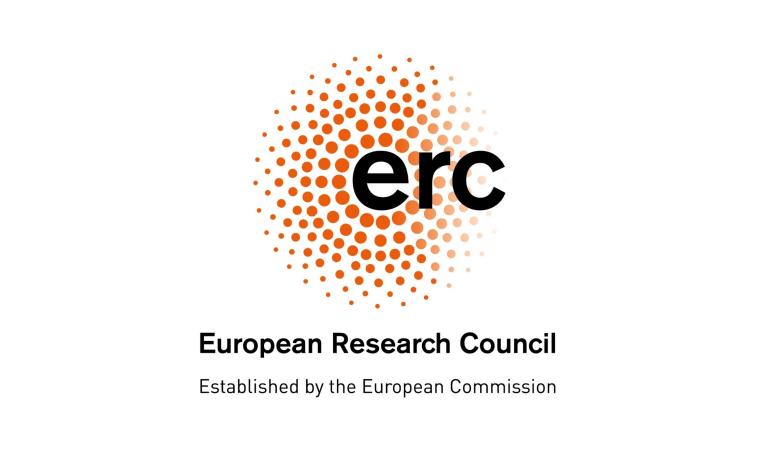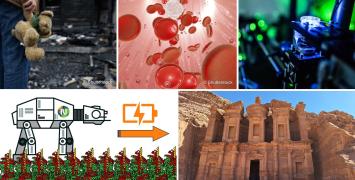
TERRA INCOGNITA: CONQUERING NEW BRAIN FRONTIERS
For sixteenth century explorers, the Americas were a large, unknown land to discover and map. Today, the subcortex is the "terra incognita" of twenty-first century neurology. Counting alone for about a fourth of the brain's volume, mapping the subcortex could lead to understanding complex human behaviours, and open unthinkable lines of inquiry. Despite its importance, only about 7% of this structure has currently been observed, due to the limitations of available imaging technologies.
Birte Forstmann's proposal to create a tool to chart the subcortex has earnt her an ERC Proof of Concept grant. This idea stems from her work studying the everyday process of fast-paced decision-making. With her PoC grant, she will improve current imaging techniques, and apply them to identifying targets for Deep Brain Stimulation, a therapy relying on a profound understanding of the human brain. Her work furthering our knowledge of the subcortex, therefore, could provide major benefits to patients suffering from otherwise untreatable conditions, such as Parkinson's disease.
Project: Atlas for deep brain stimulation (ATLAS)
Researcher: Birte Uta Forstman
Host Institution: University of Amsterdam, Netherlands
ERC Funding: € 150,000
2013 StG Project: Speeded decision-making in the basal ganglia: An integrative model-based approach (SPEED)
PAINLESS BIOPSIES FOR BETTER PATIENT CARE
Dr. Marja Tiirola is an environmental microbiologist by trade. As an ERC Consolidator grantee, she has spent her career screening microbes in the environment to understand their role in the process of climate change. To do so, the researcher, with her team based at the University of Jyväskylä, has developed ground-breaking new protocols with the need to test hundreds of diverse samples quickly and effectively.
Now, the applications of her work will allow the development of better diagnostic tools for cancer patients, based on the detection of genetic biomarkers in the blood. This will provide doctors with the opportunity of screening the patients at point of care, reducing the waiting times and pain when monitoring the cancer therapy. Dr. Tiirola has recently received an ERC Proof of Concept grant to be able to commercialise this technology and make it readily available for hospitals and health care centres.
Project: Proof of concept and pre-commercialisation of personalised liquid biopsies in cancer therapy (BiopSense)
Researcher: Marja Tiirola
Host Institution: University of Jyväskylä, Finland
Funding: € 150,000
2013 CoG Project: Functional analysis of uncultivated microbes using radioisotope probing (Micro-RIP)
PRODUCING MENTHOL IN AN ENVIRONMENTALLY FRIENDLY WAY
Menthol is the most popular flavour in the world due to its uniquely fresh taste. It is present in all kinds of everyday products, from shower gel to toothpaste. Some 40 % of menthol comes not from natural sources like pepper mint, but industrial synthesis. Most commonly menthol is produced from citronellal by using metals in the chemical reaction. However, applying metals in the process is expensive and harmful to environment, and can contaminate the product.
With his Consolidator Grant, Nuno Maulide uncovered a carbon-carbon bond forming reaction that allows producing menthol from citronellal in a single step and without using metals in the reaction. With his new Proof of Concept grant, Prof. Maulide aims to optimise the metal-free conversion of citronellal to menthol in a single step, to demonstrate technical implementation on large scale, and to conduct market and intellectual property rights strategy.
Project: A redox-neutral process for the cost-efficient and environmentally friendly production of Menthol (NEUTRAMENTH)
Researcher: Nuno Maulide
Host : University of Vienna, Austria
ERC Funding: € 149,996
2015 CoG Project: A Unified Approach to Redox-Neutral C-C Couplings: Exploiting Vinyl Cation Rearrangements (VINCAT)
DEVELOPING A NEW UNIVERSAL INFLUENZA VACCINE
Influenza viruses change constantly. In general, this happens by 'antigenic drift' whereby small changes in the virus’ genes happen continually over time. Consequently, even though you may have had the flu one year, you may become sick the next year.
With the Advanced Grant, Sunetra Gupta and her team have discovered that the changes in the influenza virus are primarily driven by natural immune responses against epitopes of limited variability. An epitope is part of the virus to which antibodies bind and prevent the virus from entering cells. Dr Craig Thompson from Sunetra Gupta’s team has identified epitopes of limited variability in influenza A virus subtypes H1 and H3 as well as in two lineages of influenza B. By vaccinating against the epitopes, immunity against all past and present H1, H3 and influenza B strains can be achieved. With the Proof of Concept grant, the team aim to develop a vaccine which would remove the need to vaccinate each year.
Project: A novel universal influenza vaccine targeting epitopes of limited variability (UniFluVac)
Researcher: Sunetra Gupta
Host Institution: The Chancellor, Masters and Scholars of the University of Oxford
ERC Funding: € 149,297
2010 AdG Project: Evolution of Pathogen and Host Diversity (DIVERSITY)
HOW TO FIX A BROKEN GUT
More and more people are concerned about their intestinal health. New diets, specific products, intolerance testing, we are definitely starting to worry about how our guts feel. But for over 235 million people worldwide, uncomfortable chronic symptoms are more than a passing trend. These are the people affected by diseases known as leaky gut syndromes, such as Metabolic Syndrome and Inflammatory Bowel Disease. In these situations, the intestinal wall is compromised, allowing microbes from the digestive system to enter other parts of the body, causing inevitable ill health.
Treatment for these syndromes is often ineffective, not to mention expensive, as they are poorly understood. ERC grantee Luigina Romani has worked on these diseases throughout her career, isolating the ‘postbiotic’ molecule, indole-3-aldehyde (IAld). Prof. Romani has confirmed the role of IAId in repairing the gut wall of animals, and now, with the help of an ERC Proof of Concept grant, she aims to further her studies and lead, eventually, to a commercialisation of the molecule for therapeutic purposes. This would be the first effective step towards an actual cure for broken guts.
Project: Drug Discovery from the Microbiota (MicroTher)
Researcher: Luigina Romani
Host Institution: University of Perugia, Italy
ERC Funding: € 150,000
2011 AdG Project: Metabolomics of fungal diseases: a systems biology approach for biomarkers discovery and therapy (FunMeta)
A NOVEL GEL FOR CHRONIC PAIN
Chronic nerve pain can significantly worsen people's quality of life. According to international studies, one in five adults in Europe suffers from chronic pain which amounts to 95 million people. The novel gel developed during this project can be used to treat many different types of peripheral nerve pain. One common type of chronic pain is Trigeminal Neuralgia (TN), a prolonged debilitating condition caused by a trauma to the trigeminal nerve, resulting in sudden attacks of excruciating shooting facial pain. It is infamously called the “suicide disease” due to the high number of suicides associated with it. Dr Martin O'Halloran from the National University of Ireland Galway will use his Proof of Concept Grant to develop a novel hydrogel capable of providing long-lasting and drug-free treatment for this condition and other areas affected by chronic nerve pain.
Project: A novel Non-migrating Hydro-gel for relieving Chronic Pain (HydroLieve)
Researcher: Martin O'Halloran
Host Institution: National University of Ireland Galway, Ireland
ERC Funding: € 149,954
2014 StG Project: Frontier Research on the Dielectric Properties of Biological Tissue (BIOELECPRO)
A STEP CLOSER TO AUTOMATED FAKE NEWS DETECTION
Social media has become one of our main sources of news. However, as the past elections in the US and the UK have shown, it has also become a platform to share intentionally false information. But how to detect, what content is true or false? Michael Bronstein approaches the topic from a new angle. Instead of analysing the content, his team examines the news spreading patterns in social networks.
With the ERC Consolidator Grant, Prof. Bronstein developed a novel class of geometric deep learning algorithms. His new research project GoodNews, funded with the Proof of Concept grant, is based on these algorithms and aims to convert the geometric deep learning technology into a commercial application that could be used for detecting fake news. Bronstein's team has established a company Fabula AI and will use the grant to develop a prototype system with real data from social media and solidify the intellectual property portfolio.
Project: Fake news detection in social networks using geometric deep learning (GoodNews)
Researcher: Michael Bronstein
Host Institution: Universita Della Svizzera Italiana, Switzerland
ERC Funding: € 150,000
2016 CoG Project: Deep LEarning on MANifolds and graphs (LEMAN)





